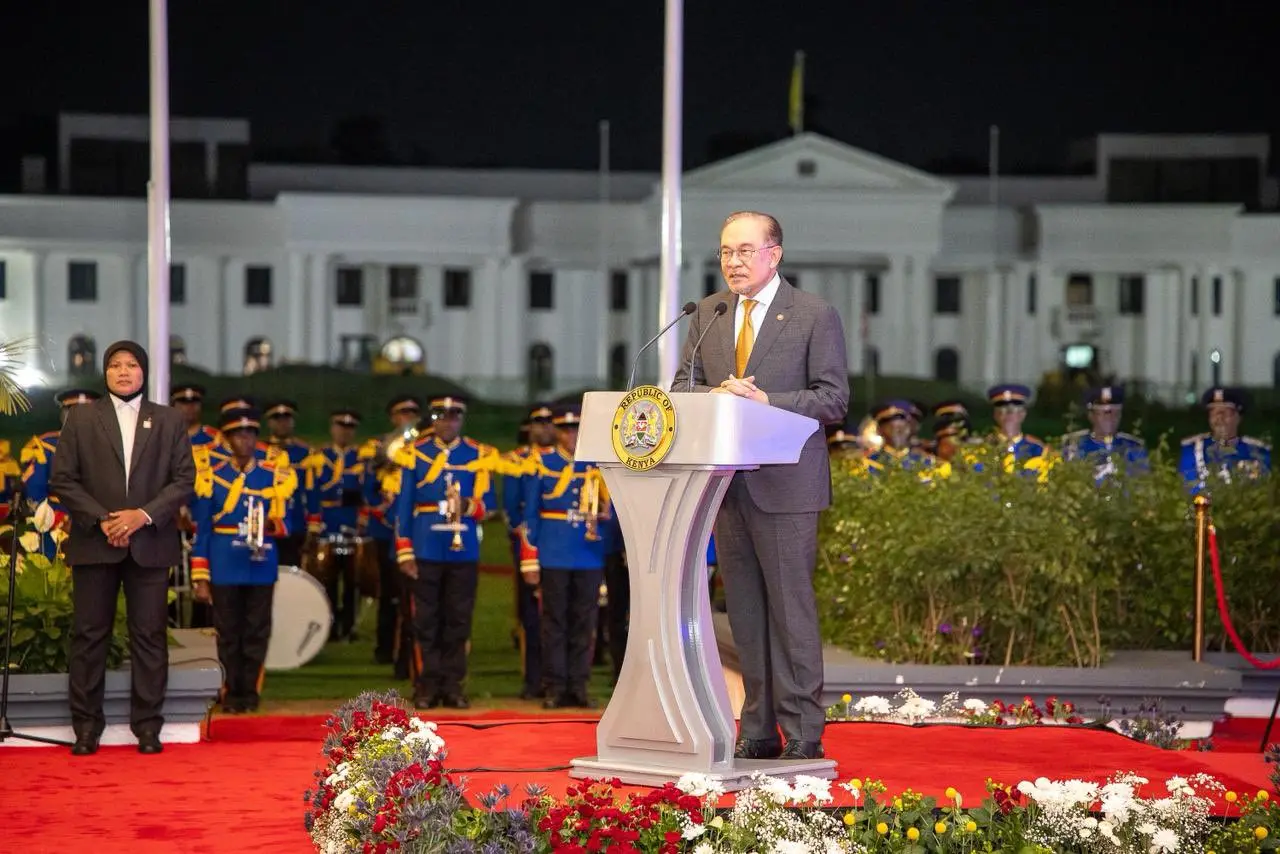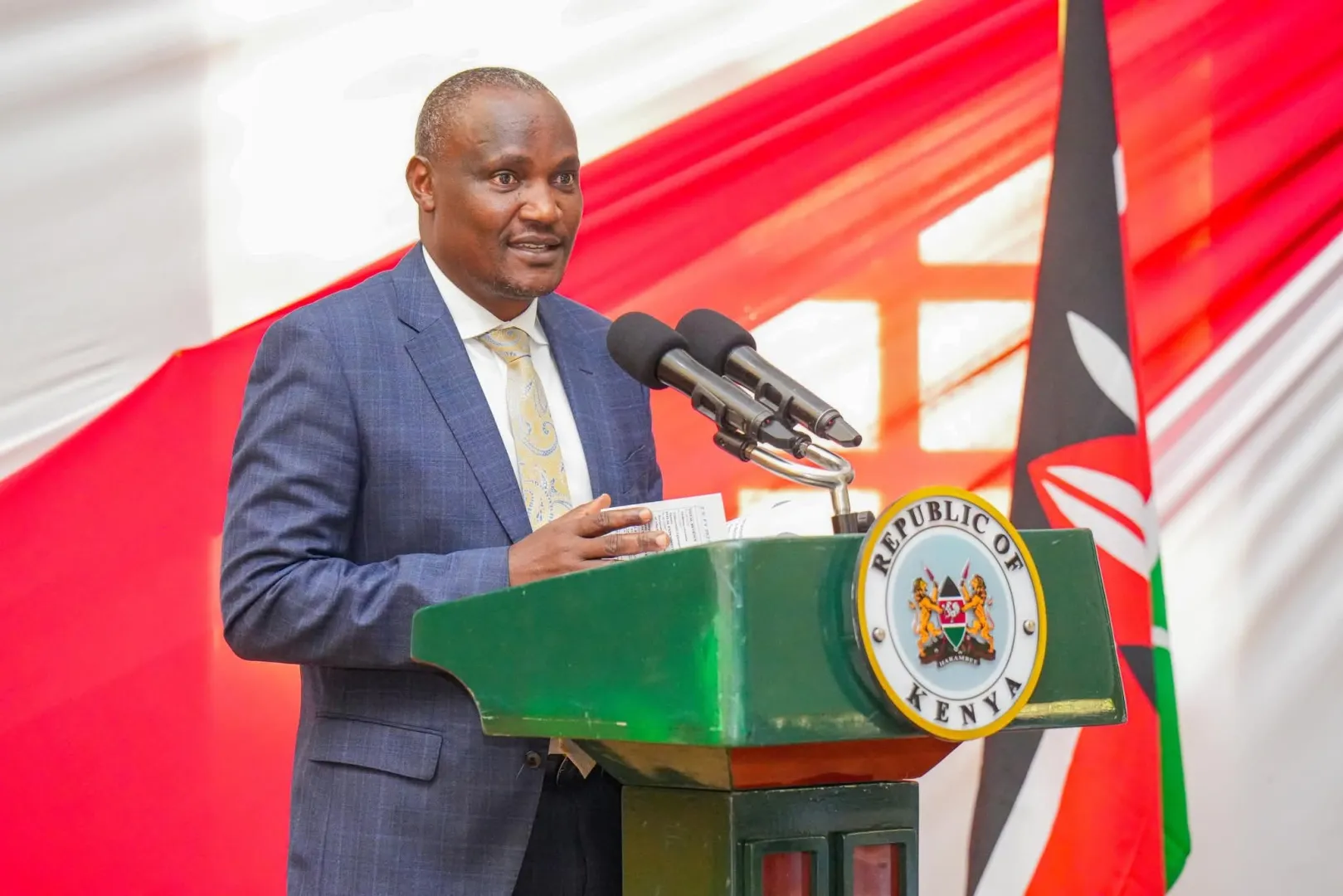The International Monetary Fund has projected that Ethiopia’s economy will expand by 7.2 percent in 2025, positioning the East African nation among sub-Saharan Africa’s fastest-growing economies despite ongoing regional and global economic headwinds. This robust growth forecast reflects the country’s aggressive pursuit of structural reforms, successful debt restructuring efforts, and diversification initiatives aimed at building a more resilient and dynamic economy capable of sustaining expansion over the long term.
According to the IMF’s latest Regional Economic Outlook for Sub-Saharan Africa, Ethiopia will share the top growth position in 2025 with Guinea, both projected to expand at 7.2 percent. The forecast places Ethiopia ahead of other strong regional performers including Rwanda at 7.1 percent and Benin at 7.0 percent, underscoring the country’s economic momentum despite significant challenges including political transitions, debt sustainability concerns, and the aftermath of internal conflicts that disrupted economic activity in recent years.
Build the future you deserve. Get started with our top-tier Online courses: ACCA, HESI A2, ATI TEAS 7, HESI EXIT, NCLEX-RN, NCLEX-PN, and Financial Literacy. Let Serrari Ed guide your path to success. Enroll today.
The growth projection for 2025 represents a slight moderation from Ethiopia’s performance in the previous fiscal year, when the economy expanded by 8.8 percent according to President Taye Atske Selassie’s October address to the House of Peoples’ Representatives. However, the IMF expects growth to ease only marginally to 7.1 percent in 2026, suggesting that the country’s expansion trajectory remains firmly established and that the reforms undertaken are delivering sustained rather than temporary benefits.
Fiscal Reforms Drive Economic Transformation
The foundation of Ethiopia’s impressive growth trajectory rests substantially on comprehensive fiscal reforms and improved debt management practices that have restored creditor confidence and created fiscal space for productive government investment. Abebe Aemro Selassie, Director of the IMF’s African Department, emphasized that stronger revenue mobilization and improved debt policies are essential to sustaining economic momentum and building resilience amid regional fiscal pressures affecting countries throughout sub-Saharan Africa.
Revenue mobilization represents a critical component of Ethiopia’s reform agenda, as the government seeks to expand its tax base, improve collection efficiency, and reduce dependence on external financing. Like many developing economies, Ethiopia has historically struggled with relatively low tax-to-GDP ratios that limit government capacity to fund infrastructure, social services, and development initiatives. Reforms targeting customs administration, domestic tax compliance, and reduction of informal economic activity aim to generate the revenues necessary to support the government’s ambitious development plans while maintaining fiscal sustainability.
Debt management improvements have proven equally crucial, particularly given Ethiopia’s recent struggles with external debt sustainability that culminated in a comprehensive debt restructuring process. The country faced mounting challenges servicing its external obligations as foreign exchange earnings failed to keep pace with debt service requirements, a situation exacerbated by the COVID-19 pandemic’s economic impacts and disruptions related to internal conflicts. Successful navigation of these challenges through creditor negotiations and structural reforms has created a more sustainable debt profile that allows the government to focus on growth-enhancing investments rather than debt service crises.
Prime Minister Abiy Ahmed outlined the scale of recent debt restructuring efforts during an October address, noting that between four and five billion US dollars had been renegotiated through extensive negotiations with creditors. This restructuring involved complex discussions with bilateral creditors, multilateral institutions, and private sector bondholders, each with different interests and legal frameworks governing their claims. The successful completion of these negotiations demonstrates improved government capacity in managing external financial relationships and provides a template for other heavily indebted developing countries facing similar challenges.
The Prime Minister emphasized that fiscal discipline has remained a top priority for his government, highlighting that no short-term loans have been contracted since the administration took office. This commitment to avoiding the easy recourse to short-term borrowing that often leads to debt accumulation without commensurate development gains reflects a more strategic approach to public finance management. “We currently have no problem paying our debt,” the Prime Minister stated, adding that ongoing discussions with creditors, particularly Eurobond holders, are progressing with Ethiopia’s rapid growth providing confidence in the country’s repayment capacity.
Broad-Based Economic Growth Across Sectors
Ethiopia’s economic expansion has demonstrated encouraging breadth across multiple sectors, reducing vulnerability to shocks affecting any single industry and creating more resilient growth dynamics. According to President Taye Atske Selassie’s October presentation to parliament, the previous fiscal year’s 8.8 percent growth was supported by strong performances in industry, agriculture, mining, and construction—four sectors that collectively employ the vast majority of Ethiopia’s workforce and generate most of its economic output.
The industrial sector’s performance reflects ongoing efforts to develop manufacturing capacity and reduce dependence on agricultural exports and foreign-manufactured goods. Ethiopia has pursued an industrialization strategy emphasizing labor-intensive manufacturing, particularly in textiles, garments, leather products, and agro-processing, sectors where the country possesses competitive advantages including low labor costs, proximity to major markets, and preferential trade access. The development of industrial parks with infrastructure, utilities, and streamlined regulations has attracted foreign direct investment and created employment opportunities for Ethiopia’s young and growing population.
Agricultural sector strength remains fundamental to Ethiopia’s economy, as the sector employs approximately 70 percent of the workforce and provides livelihoods for the majority of the population. Improved agricultural productivity through better inputs, expanded irrigation, mechanization, and improved market access has generated both food security improvements and export earnings growth. Coffee, oilseeds, pulses, and other agricultural commodities continue generating crucial foreign exchange while feeding processing industries that add value before export.
Mining sector development represents a relatively newer component of Ethiopia’s economic diversification efforts, as the country seeks to exploit mineral resources including gold, tantalum, and potash that have attracted international mining companies. While mining currently contributes a relatively small share of GDP, successful development of this sector could provide significant revenue streams and foreign exchange earnings that would further strengthen the country’s external position and reduce dependence on traditional exports.
Construction activity has boomed in recent years, driven by infrastructure development, urban expansion, and real estate investment responding to rapid urbanization and rising incomes among certain population segments. Major infrastructure projects including roads, railways, power generation, and telecommunications networks have created substantial construction demand while building the foundational infrastructure necessary for sustained long-term growth. The ambitious Grand Ethiopian Renaissance Dam project, despite generating regional tensions, exemplifies Ethiopia’s infrastructure ambitions and potential to transform its energy profile through hydroelectric power generation.
Regional Context and Comparative Performance
Ethiopia’s projected 7.2 percent growth in 2025 stands out sharply against the broader sub-Saharan African economic landscape, where growth is expected to hold at 4.1 percent this year before rising modestly to 4.4 percent in 2026 according to IMF projections. This regional growth rate, while positive, remains well below the levels necessary to meaningfully reduce poverty, create sufficient employment for rapidly growing populations, or converge toward income levels in more developed regions.
The divergence between fast-growing economies like Ethiopia, Rwanda, Côte d’Ivoire, and Uganda and the broader regional average reflects the heterogeneous nature of sub-Saharan Africa’s economic performance. Countries that have maintained political stability, pursued consistent economic reforms, invested in human capital and infrastructure, and diversified their economies beyond commodity dependence have generally achieved stronger growth outcomes. Conversely, resource-dependent economies suffering from commodity price volatility, conflict-affected states struggling with security challenges, and countries with weak governance and poor policy environments have experienced stagnant or declining per capita incomes.
South Sudan’s projected 24.3 percent expansion in 2025 represents an exceptional outlier driven primarily by oil sector dynamics rather than broad-based economic development. The country’s growth reflects recovery from extremely low production levels and the volatile nature of oil-dependent economies where output can fluctuate dramatically based on technical, security, and market factors. This oil-driven growth contrasts sharply with Ethiopia’s more diversified expansion based on multiple sectors and structural reforms, suggesting greater sustainability in the Ethiopian model despite the lower headline growth rate.
Resource-dependent economies across sub-Saharan Africa continue facing persistent challenges as commodity price volatility creates fiscal uncertainty, discourages long-term planning, and leaves governments vulnerable to external shocks beyond their control. Countries heavily dependent on oil, minerals, or agricultural commodities for export earnings and government revenues experience boom-bust cycles that disrupt development planning and make sustained poverty reduction difficult. The ongoing transition toward renewable energy globally also creates uncertainty for oil-dependent African economies as they contemplate long-term export prospects.
Conflict-affected states face even more severe obstacles to economic development, as insecurity disrupts production, destroys infrastructure, displaces populations, and diverts resources toward military spending rather than productive investment. Countries experiencing ongoing conflicts or emerging from recent violence must simultaneously address security challenges, rebuild destroyed infrastructure, restore government services, and pursue economic reforms—a daunting combination that typically results in disappointing economic performance and limited improvements in living standards.
External Challenges Constraining Regional Growth
Beyond country-specific factors, sub-Saharan African economies collectively face external headwinds that constrain growth and complicate policy implementation. Commodity price volatility continues creating fiscal challenges for resource exporters, as government revenues fluctuate with international market conditions largely beyond national control. The recent period has seen significant swings in prices for oil, minerals, and agricultural commodities, making budget planning difficult and forcing periodic fiscal adjustments that can disrupt government programs and economic activity.
High borrowing costs represent another significant constraint, as rising global interest rates driven by monetary policy tightening in advanced economies have increased debt service burdens for African countries and made new borrowing more expensive. Many sub-Saharan African countries accumulated substantial debt during the period of low global interest rates following the 2008 financial crisis, and now face significantly higher costs when refinancing maturing obligations or seeking new financing. Some countries have been effectively shut out of international capital markets due to perceived risks, forcing them to rely on more expensive or restrictive financing sources.
Declining foreign aid flows have removed another traditional source of development financing, as donor countries have reduced assistance levels amid their own fiscal pressures and shifting policy priorities. Official development assistance to sub-Saharan Africa, while still substantial, has not kept pace with growing development needs, forcing governments to seek alternative financing sources or scale back development programs. The changing nature of aid, with increasing emphasis on loans rather than grants and greater conditionality attached to assistance, has also complicated aid utilization and reduced its net contribution to development financing.
These external pressures have put additional strain on government budgets and reduced policy space for countercyclical interventions or development investments. Countries facing revenue shortfalls due to commodity price declines, rising debt service costs, and reduced aid flows must often implement fiscal austerity that can depress economic activity in the short term even if necessary for long-term sustainability. The limited fiscal space also constrains governments’ ability to respond to shocks such as droughts, floods, disease outbreaks, or economic downturns that require rapid mobilization of resources.
One decision can change your entire career. Take that step with our Online courses in ACCA, HESI A2, ATI TEAS 7, HESI EXIT, NCLEX-RN, NCLEX-PN, and Financial Literacy. Join Serrari Ed and start building your brighter future today.
Ethiopia’s Long-Term Economic Vision
Beyond the immediate growth projections, Prime Minister Abiy Ahmed has articulated an ambitious long-term vision for Ethiopia’s economic transformation. In an October address, he projected that Ethiopia would become Africa’s second-largest economy by 2032 and the continent’s leading economy by 2036. These bold projections reflect confidence in the country’s reform trajectory and development potential, while also setting aspirational targets that could galvanize national effort and attract international investment.
Achieving these ambitious goals would require sustained high growth rates well above regional averages for more than a decade, continued successful implementation of economic reforms, substantial infrastructure development, human capital improvements, and successful navigation of various political, social, and external challenges. The government has set a nine percent growth target for the coming year, maintaining the aggressive expansion trajectory that has characterized recent performance.
Ethiopia’s path toward becoming Africa’s largest economy would require overtaking current leaders including Nigeria and South Africa, both of which possess larger current GDP levels but have experienced disappointing growth in recent years due to various structural challenges, governance issues, and policy uncertainties. Nigeria, Africa’s most populous country with a large oil sector, has struggled with infrastructure deficits, security challenges, and policy inconsistencies that have constrained growth below its potential. South Africa, the continent’s most industrialized economy, has faced electricity supply constraints, corruption, and structural unemployment that have held back expansion.
If Ethiopia maintains growth rates in the 7-8 percent range while these larger economies continue growing at 2-3 percent, the convergence timeline outlined by Prime Minister Abiy could prove realistic, though much depends on avoiding major disruptions and sustaining reform momentum. The country’s large and young population, improving infrastructure, strategic geographic location, and recent policy improvements provide foundations for sustained rapid growth if political stability can be maintained and reforms continue.
Investment Climate and Development Priorities
Realizing Ethiopia’s growth potential and long-term economic vision requires continued improvements in the investment climate to attract both domestic and foreign capital necessary for funding infrastructure, industrial development, and service sector expansion. The government has implemented various reforms aimed at improving ease of doing business, streamlining regulations, strengthening property rights, and creating more transparent and predictable business environments.
Foreign direct investment has increased in recent years as international companies recognize Ethiopia’s potential as a manufacturing base for serving African and global markets. The country’s participation in preferential trade arrangements including the African Growth and Opportunity Act providing duty-free access to US markets has enhanced its attractiveness for export-oriented manufacturing. However, foreign investment remains below levels achieved by some comparator countries, suggesting room for further improvement in investment promotion and facilitation.
Infrastructure development represents a critical priority, as inadequate transportation, energy, telecommunications, and water infrastructure constrains private sector development and overall economic efficiency. The government has pursued ambitious infrastructure programs including road and railway construction, power generation expansion, telecommunications modernization, and urban infrastructure development. These investments, while requiring substantial upfront costs and sometimes generating debt sustainability concerns, create foundations for long-term growth by reducing business costs and expanding economic opportunities.
Human capital development through education and health improvements remains essential for ensuring that economic growth translates into broad-based welfare improvements and that the country develops the skilled workforce necessary for moving up value chains toward more sophisticated economic activities. Ethiopia has made significant progress in expanding access to education, with primary enrollment rates increasing dramatically over recent decades. However, quality concerns persist, and educational content does not always align well with labor market needs. Similarly, health improvements have extended life expectancy and reduced child mortality, but significant challenges remain in areas like maternal health, nutrition, and communicable disease control.
Navigating Ongoing Challenges
Despite impressive growth projections and reform progress, Ethiopia continues facing significant challenges that could disrupt economic momentum if not effectively managed. Political tensions related to ethnic federalism, regional autonomy demands, and national identity questions have generated periodic conflicts that disrupted economic activity and displaced populations. The recent conflict in Tigray region demonstrated how quickly political tensions can escalate into violence with severe humanitarian and economic consequences. Maintaining political stability and managing ethnic diversity through inclusive governance will be essential for sustaining economic progress.
External vulnerabilities persist despite debt restructuring progress, as Ethiopia continues depending heavily on commodity exports for foreign exchange earnings and remains vulnerable to terms of trade shocks. The country runs persistent current account deficits requiring financing through capital inflows, foreign direct investment, or drawdowns of foreign exchange reserves. Building foreign exchange reserve buffers and diversifying export products and markets would enhance resilience to external shocks.
Climate change poses increasingly severe risks for Ethiopia’s predominantly rain-fed agriculture, with more frequent droughts and floods disrupting production, threatening food security, and requiring costly emergency responses. Building climate resilience through expanded irrigation, improved water management, drought-resistant crop varieties, and agricultural diversification represents a critical priority for protecting livelihoods and sustaining agricultural sector contributions to growth.
Regional geopolitical tensions, particularly disputes over water resources with downstream Nile River countries Egypt and Sudan concerning the Grand Ethiopian Renaissance Dam, create potential for conflict that could disrupt economic progress and divert resources toward security concerns. Diplomatic efforts to resolve these tensions and reach agreements on water sharing that balance competing interests will be important for maintaining the peaceful environment necessary for economic development.
Conclusion and Outlook
The International Monetary Fund’s projection of 7.2 percent growth for Ethiopia in 2025 reflects significant progress in implementing economic reforms, managing debt challenges, and creating conditions for sustained expansion. The country’s position among sub-Saharan Africa’s fastest-growing economies demonstrates that consistent policy implementation and structural reforms can deliver substantial growth dividends even amid challenging regional and global conditions.
However, translating high GDP growth into broad-based improvements in living standards, poverty reduction, and job creation for Ethiopia’s rapidly growing population remains an ongoing challenge requiring attention to distributional outcomes, social inclusion, and equitable access to economic opportunities. Growth that concentrates benefits among narrow segments while leaving large populations behind creates social tensions that can undermine political stability and ultimately threaten economic progress.
The ambitious long-term vision articulated by Prime Minister Abiy Ahmed of becoming Africa’s largest economy by 2036 provides an aspirational target that, while challenging, appears potentially achievable if current reform trajectories are maintained and major disruptions avoided. Realizing this vision would transform Ethiopia’s economic position and influence within Africa while delivering significant welfare improvements for Ethiopian citizens.
For the broader sub-Saharan African region, Ethiopia’s growth trajectory demonstrates that rapid economic expansion remains possible despite global headwinds and that well-designed reforms, disciplined fiscal management, and strategic investments can overcome historical constraints. As the IMF’s regional projections indicate modest growth for sub-Saharan Africa overall, countries like Ethiopia, Rwanda, and Côte d’Ivoire provide models for how consistent policy implementation can generate superior outcomes even within challenging regional contexts.
The coming years will test whether Ethiopia can sustain its impressive growth momentum, navigate ongoing political and external challenges, and translate economic expansion into broad-based development that improves lives for its more than 120 million citizens. The stakes are high not just for Ethiopia but for the broader region, as successful examples of rapid, sustained, and inclusive growth remain too rare across sub-Saharan Africa.
Ready to take your career to the next level? Join our Online courses: ACCA, HESI A2, ATI TEAS 7 , HESI EXIT , NCLEX – RN and NCLEX – PN, Financial Literacy!🌟 Dive into a world of opportunities and empower yourself for success. Explore more at Serrari Ed and start your exciting journey today! ✨
Track GDP, Inflation and Central Bank rates for top African markets with Serrari’s comparator tool.
See today’s Treasury bonds and Money market funds movement across financial service providers in Kenya, using Serrari’s comparator tools.
photo source: Google
By: Montel Kamau
Serrari Financial Analyst
25th November, 2025
Article, Financial and News Disclaimer
The Value of a Financial Advisor
While this article offers valuable insights, it is essential to recognize that personal finance can be highly complex and unique to each individual. A financial advisor provides professional expertise and personalized guidance to help you make well-informed decisions tailored to your specific circumstances and goals.
Beyond offering knowledge, a financial advisor serves as a trusted partner to help you stay disciplined, avoid common pitfalls, and remain focused on your long-term objectives. Their perspective and experience can complement your own efforts, enhancing your financial well-being and ensuring a more confident approach to managing your finances.
Disclaimer: This article is for informational purposes only and does not constitute financial advice. Readers are encouraged to consult a licensed financial advisor to obtain guidance specific to their financial situation.
Article and News Disclaimer
The information provided on www.serrarigroup.com is for general informational purposes only. While we strive to keep the information up to date and accurate, we make no representations or warranties of any kind, express or implied, about the completeness, accuracy, reliability, suitability, or availability with respect to the website or the information, products, services, or related graphics contained on the website for any purpose. Any reliance you place on such information is therefore strictly at your own risk.
www.serrarigroup.com is not responsible for any errors or omissions, or for the results obtained from the use of this information. All information on the website is provided on an as-is basis, with no guarantee of completeness, accuracy, timeliness, or of the results obtained from the use of this information, and without warranty of any kind, express or implied, including but not limited to warranties of performance, merchantability, and fitness for a particular purpose.
In no event will www.serrarigroup.com be liable to you or anyone else for any decision made or action taken in reliance on the information provided on the website or for any consequential, special, or similar damages, even if advised of the possibility of such damages.
The articles, news, and information presented on www.serrarigroup.com reflect the opinions of the respective authors and contributors and do not necessarily represent the views of the website or its management. Any views or opinions expressed are solely those of the individual authors and do not represent the website's views or opinions as a whole.
The content on www.serrarigroup.com may include links to external websites, which are provided for convenience and informational purposes only. We have no control over the nature, content, and availability of those sites. The inclusion of any links does not necessarily imply a recommendation or endorsement of the views expressed within them.
Every effort is made to keep the website up and running smoothly. However, www.serrarigroup.com takes no responsibility for, and will not be liable for, the website being temporarily unavailable due to technical issues beyond our control.
Please note that laws, regulations, and information can change rapidly, and we advise you to conduct further research and seek professional advice when necessary.
By using www.serrarigroup.com, you agree to this disclaimer and its terms. If you do not agree with this disclaimer, please do not use the website.
www.serrarigroup.com, reserves the right to update, modify, or remove any part of this disclaimer without prior notice. It is your responsibility to review this disclaimer periodically for changes.
Serrari Group 2025












